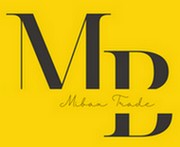What is the Legal Definition of Chocolate? (European Union)
Definition of What can be Labelled as "Chocolate"
The legal definition of chocolate varies by country/region and is dictated by regulations that ensure consumers know exactly what they're getting when they purchase chocolate products. We will simplify all this information so that you know what makes chocolate legally chocolate.
Terminology: Cocoa Solids
Just to understand these definitions better, we need to clarify the term ‘Cocoa Solids”.
Cocoa solids are, in theory, the non-fat solids found in chocolate liquor/mass/paste, so basically, the totally defatted cocoa powder particles contained in the cocoa bean. But when they are used to determine the legality of the use of the term “Chocolate,” they may also refer to the total cocoa content, which is applicable to the definitions below. We personally prefer the term “Cocoa Content”, but since the definitions make a difference with liquor (paste/mass) and butter, we will keep them as stated. Dry Cocoa Solids, on the other hand, are the component of the cocoa beans that are not cocoa butter.
Source: https://eur-lex.europa.eu/legal-content/EN/TXT/HTML/?uri=CELEX%3A32000L0036
The European Union (EU) has a somewhat different approach to defining chocolate. The EU Directive 2000/36/EC sets out the standards for various chocolate products:
Milk Chocolate: Must contain at least 25% total cocoa solids, including a minimum of 14% dry milk solids.
Dark Chocolate: Must contain at least 35% cocoa solids.
White Chocolate: Must contain at least 20% cocoa butter and 14% milk solids.
Additionally, the EU allows up to 5% of vegetable fats other than cocoa butter in chocolate, provided this is clearly stated on the packaging.
Additives and Labeling
Legal definitions also cover the use of additives like lecithin (an emulsifier) and flavorings like vanilla. These additives are permitted to enhance the texture and flavor of chocolate but must be disclosed on the product label.
Another important factor is that allergens must always be clearly stated on the labels. This is of utmost importance as some people rely on this information and could have serious and sometimes fatal allergic reactions.
The legal definition of chocolate is a complex and detailed set of standards that vary by region but generally ensure that products labeled as chocolate contain a minimum amount of cocoa. These regulations help maintain quality and transparency, ensuring consumers can trust the chocolate products they purchase.
Whether you're making dark chocolate, a creamy piece of milk chocolate, or a sweet bite of white chocolate, you need to make sure that it meets specific legal standards set to maintain its authenticity and quality. And regarding innovation? You can certainly create new products as long as you use the correct labeling and make sure the consumer has all the information at hand to decide if your treat is something they want to buy and consume. In the end, it is all about transparency.


































